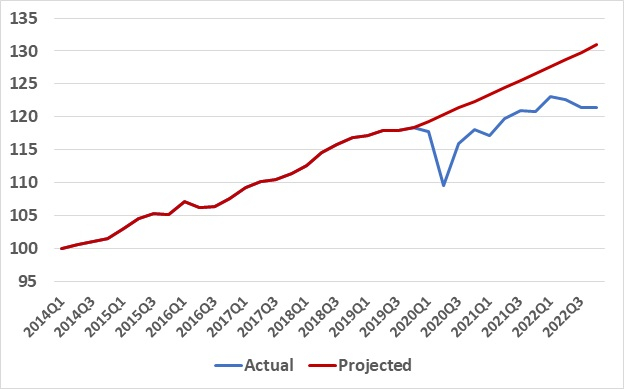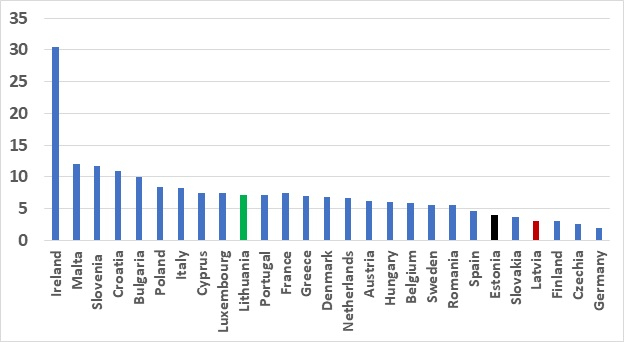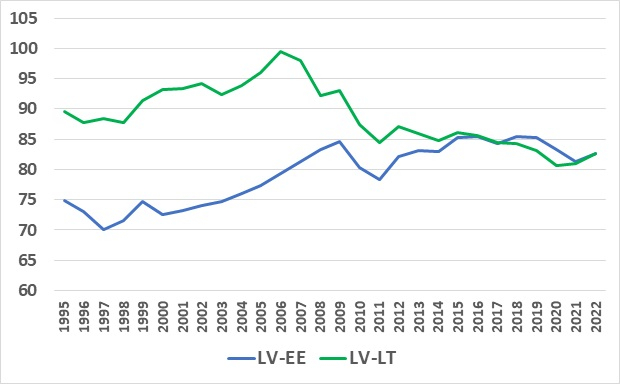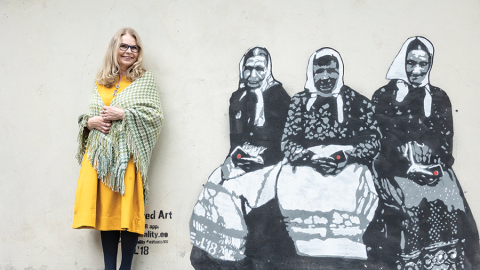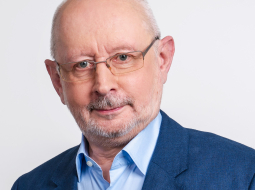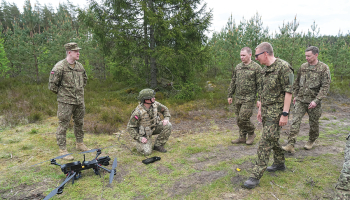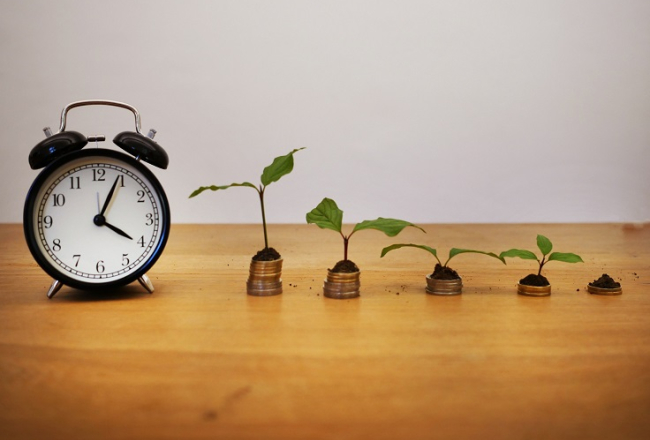
Ilustratīvs attēls
Tracking the growth performance of the Latvian economy has been more complicated than usual in the past three years due to two major shocks: a) Covid in 2020-2022 and the Russian invasion of Ukraine starting in 2022.
In this short column I will try to make an assessment of how the Latvian economy has fared since 2020 and what the future might have in store. It doesn’t look too good, I’m afraid.
The euro was introduced in January 2014, so I use GDP development since then as a starting point. Not very scientific but quite reasonable – this is after normalization of the economy following the financial crisis. Between 2014 and 2019 the economy grew on average by 3.4% per year. If we think it would have continued to do so in the absence of Covid and war, I would have the full red line in Figure 1 and GDP would have been some 31% larger now than in 2014.
Covid and war did happen, however, with a big but short-lived hit to the economy in 2020. In Figure 1 the actual development of GDP can be followed by the red line until 2019 Q4 and after that by the blue line.
The recession in 2020 was indeed short-lived but sharp and as can be seen from the graph, the war has created yet another but so far much more shallow recession in Latvia.
The gap between the two lines right now is 8%, indicating GDP lost to these two economic shocks (given my assumptions are not too far off).
But just about any economy in Europe has been hit by both Covid and Russia’s war. How does Latvia’s performance compare with that of other countries. I look at that in Figure 2.
Figure 1: GDP development (constant prices) in Latvia since 2014. Actual development in BLUE, estimated development in RED, 2014 Q1 – 2022 Q4
Source: Statistics Latvia and own calculations
Here (Figure 2) I look at GDP performance from 2020 Q1 (where Covid started) through 2022 Q3 (the latest data available for all EU countries).
In this period the Latvian economy has grown only some 3% altogether, a quite dismal performance where only Finland, Czechia and Germany have performed worse.
One may argue that Latvia is much more exposed to the impact from the war than many other countries due to its relative proximity to Ukraine and its trade (and now sanctions) with Russia and Belarus, but we have still performed worse than Estonia, Lithuania and Poland. I have no good explanation for this difference, but it does not look reassuring.
Figure 2: GDP growth, 2020 Q1 – 2022 Q3, EU27
Source: Eurostat and own calculations
Note: Ireland’s very strong performance is very much due to big tech (Google, Alphabet, Microsoft etc.) doing so well during lockdown – and big tech is mostly located in Ireland.
Bank of Latvia Governor, Mārtiņš Kazāks, recently warned that Latvia might be caught in the so-called middle income trap (link here; in Latvian). If so, the future prospects are rather gloomy and the current data show some indication of this.
I have used this kind of graph before but find it useful to repeat it also in this context. Figure 3 shows Latvian GDP per capita as a share of GDP per capita in Estonia and Lithuania respectively.
Back in 1995, Latvian GDP per capita was 75% of the Estonian level. This rose to 85% by 2009 but since then it has essentially gone nowhere, i.e. no further convergence with Estonian income levels.
The comparison with Lithuania is even worse. Parity with Lithuanian GDP per capita was almost reached in 2007, at the height of the credit boom, but since then the ratio has been trending down for 15 years; almost half the time since independence.
Or put in a more (and possibly too) dramatic way: Never has Latvia been as poor as compared with Lithuania.
Figure 3: GDP per capita in Latvia as a share of GDP per capita in Estonia and Lithuania, 1995 – 2022
Source: IMF and own calculations
And this is the first place where I would be looking when searching for growth engines for the Latvian economy:
What have they simply done better in Estonia and Lithuania?
And can that be copied here?
And why hasn’t it been done so earlier?
Morten Hansen is Head of Economics Department at Stockholm School of Economics in Riga.
P.S. A very good and detailed look at the impact on the Latvian economy from Russia’s war in Ukraine is provided by Bank of Latvia economists Kārlis Vilerts and Matīss Mirošņikovs and can be found here.
